The 1950s had a geometry all their own. Remember? It was a curvy decade, from the topsy-swervy curveball of Whitey Ford in the Bronx to the topsy-curvy figures of the blonde bombshells in Hollywood. Round was all around.
 We liked round shapes on our dashboards.
We liked round shapes on our dashboards.
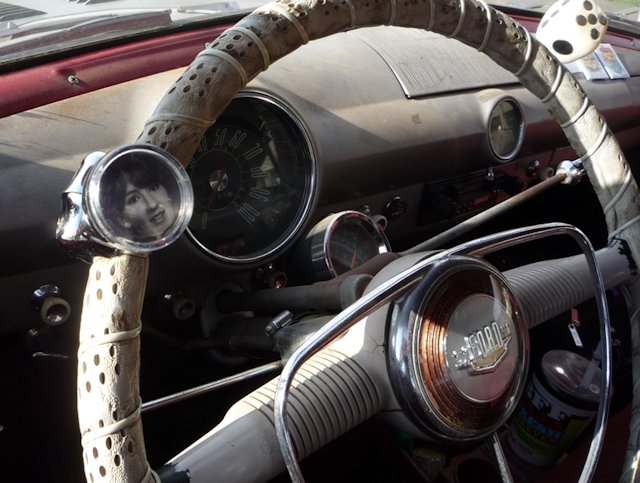 We liked round on round: “necker knobs” on steering wheels.
We liked round on round: “necker knobs” on steering wheels.
 ’Round here, we liked theater-in-the-round. Cowtown’s second Casa Manana opened in 1958.
’Round here, we liked theater-in-the-round. Cowtown’s second Casa Manana opened in 1958.
Three other kinds of structures—essentially extinct today—contributed to a well-rounded Cowtown in the 1950s: amphitheaters, railroad roundhouses and turntables, and drive-in movie theaters.
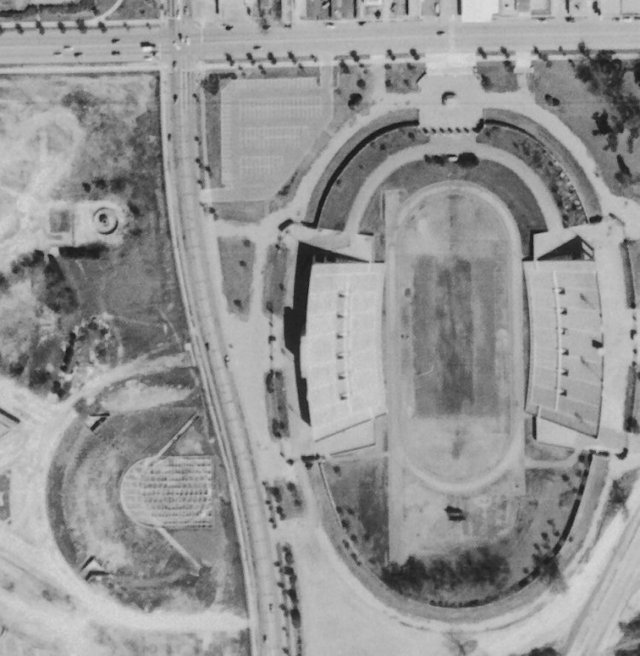 For us, just as for the ancient Romans, amphitheaters are semicircular or fan-shaped: rounded on the wide end with a stage or bandshell at the tapered end. In 1952, across University Drive from well-rounded Farrington Field, you could still see the fan-shaped footprint of the amphitheater—the alpha amphitheater: the original Casa Manana of 1936.
For us, just as for the ancient Romans, amphitheaters are semicircular or fan-shaped: rounded on the wide end with a stage or bandshell at the tapered end. In 1952, across University Drive from well-rounded Farrington Field, you could still see the fan-shaped footprint of the amphitheater—the alpha amphitheater: the original Casa Manana of 1936.
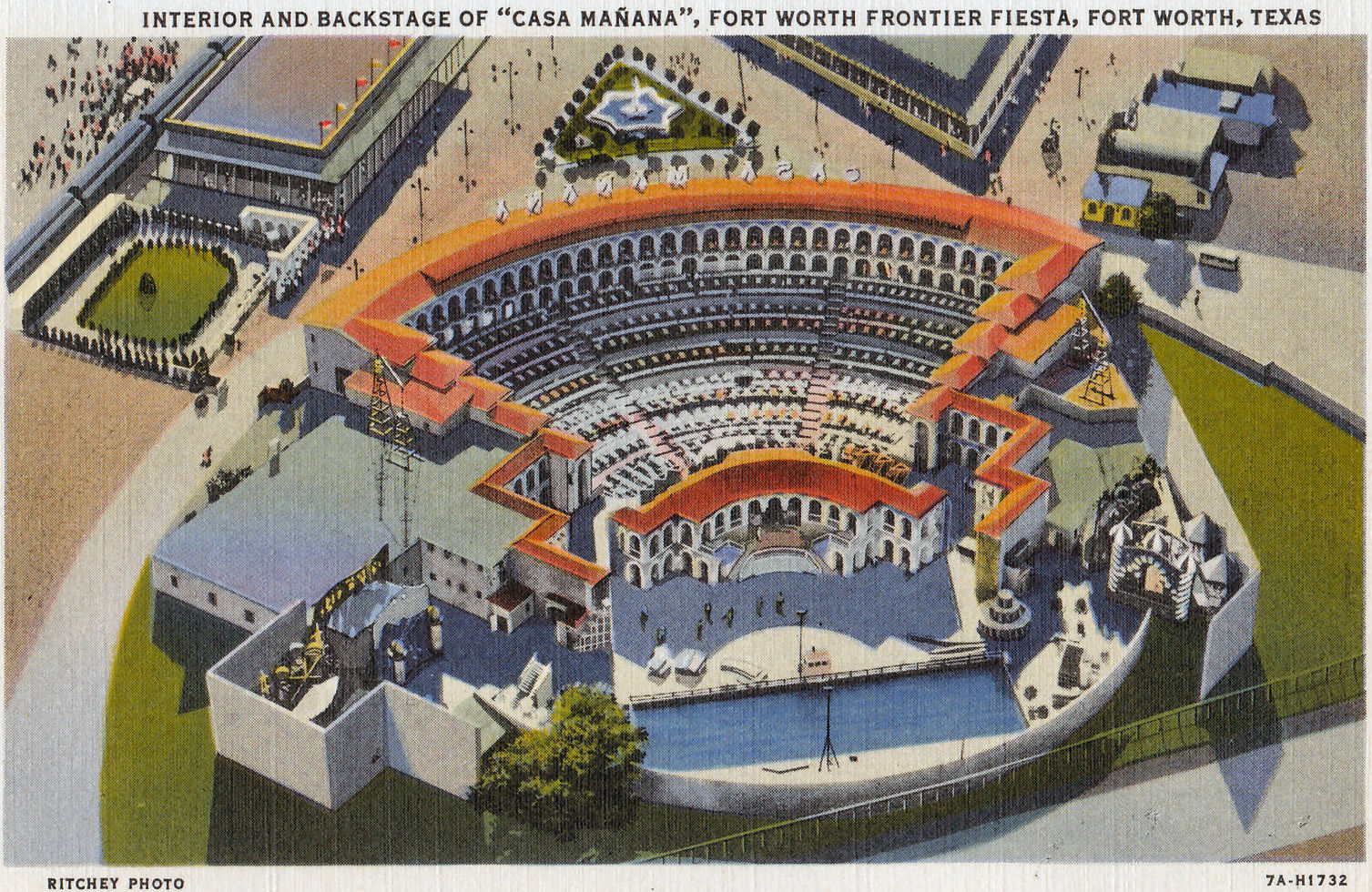 When the wind is just right you can still hear the squeak of Sally Rand’s balloons.
When the wind is just right you can still hear the squeak of Sally Rand’s balloons.
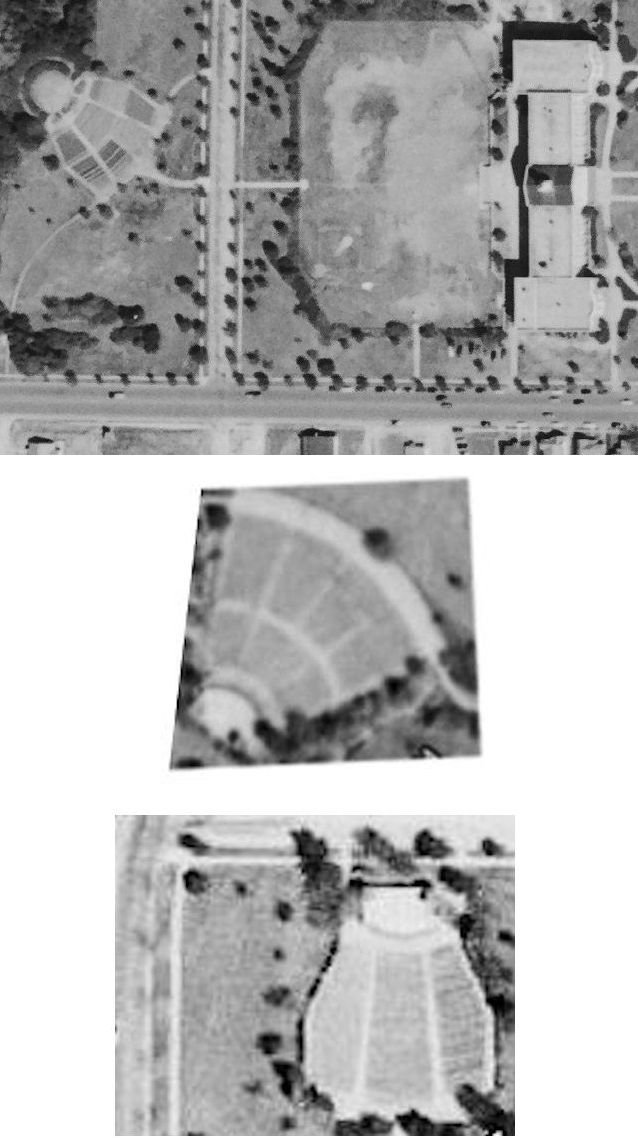
Amphitheaters, like the original Casa Manana, seem to have been a short-lived phenomenon. Aerial photos of 1952 show that Fort Worth had at least four amphitheaters in the early 1950s. Three were (top to bottom) Sycamore Park across Beach Street from Poly High just north of where “the Rec” is today, North Side High School (on Fielder Street near today’s baseball field), and McLean Junior High (Paschal High since 1955) at the corner of Forest Park Boulevard and West Lowden Street.

McLean Junior High opened in 1936.
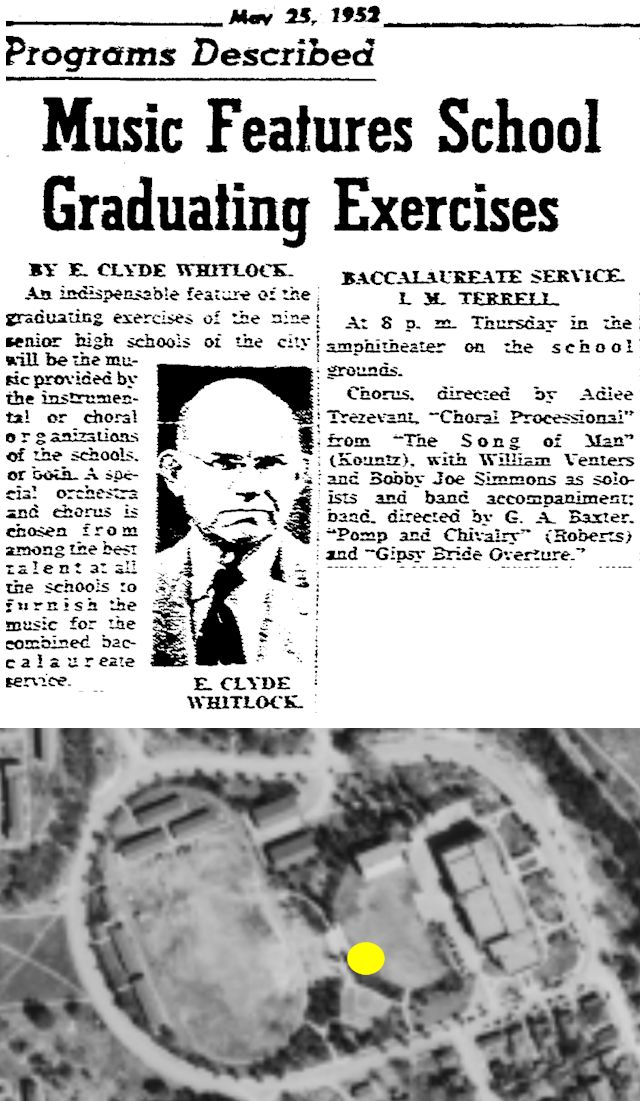 The fourth amphitheater was at I. M. Terrell High School (just below yellow dot).
The fourth amphitheater was at I. M. Terrell High School (just below yellow dot).
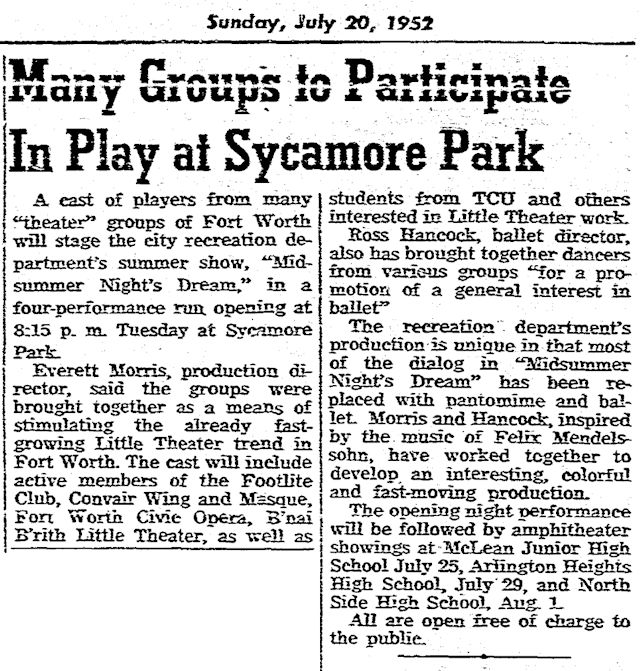
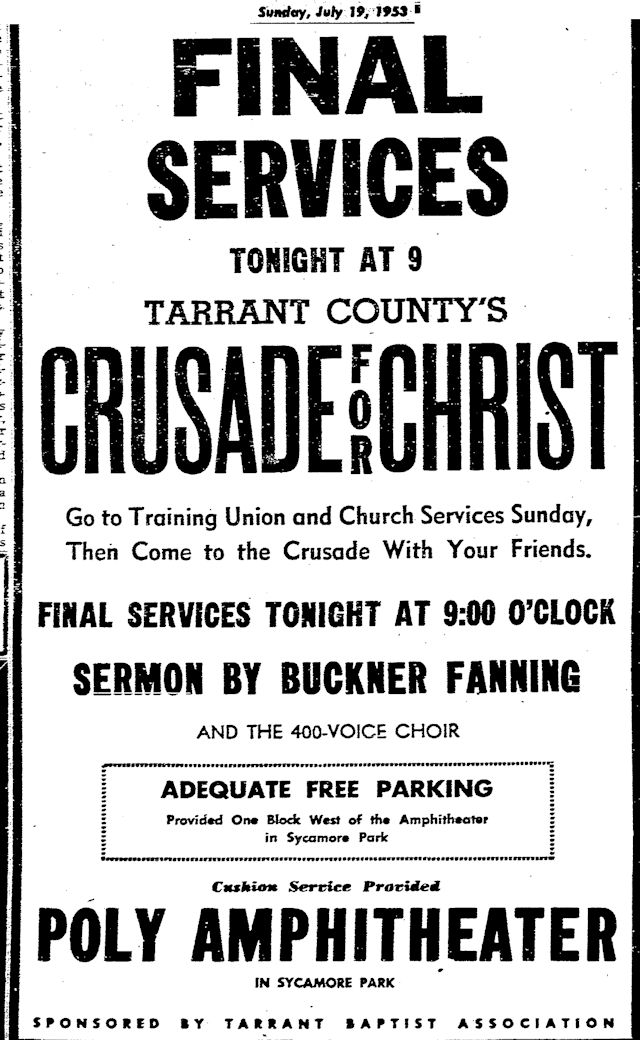
These clips from 1952 and 1953 mention the amphitheaters in Sycamore Park (“cushion service provided”) and at McLean Junior High School and North Side High School. The top clip indicates that Arlington Heights High School had an amphitheater, but such an amphitheater is not shown on aerial photos of 1952 and 1956.
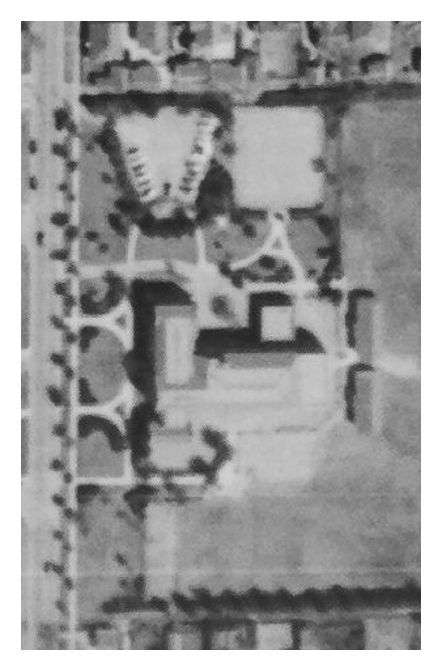 Morningside Elementary School apparently also had an amphitheater near the intersection of Evans Avenue and East Robert Street (upper left in photo) that by 1952 had been converted into a fan-shaped parking lot.
Morningside Elementary School apparently also had an amphitheater near the intersection of Evans Avenue and East Robert Street (upper left in photo) that by 1952 had been converted into a fan-shaped parking lot.
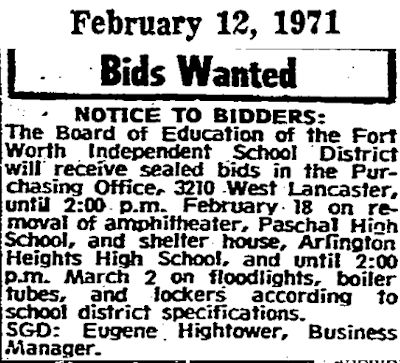 Paschal High School’s amphitheater survived into 1971, when it, too, was sacrificed to feed the Auto Age’s insatiable hunger for parking lots.
Paschal High School’s amphitheater survived into 1971, when it, too, was sacrificed to feed the Auto Age’s insatiable hunger for parking lots.

Turning to turntables and roundhouses, in the early 1950s two ages of steam overlapped: The age of steam in locomotives was waning as diesels moved in; the age of steam on the windows of parked cars was waxing as drive-in theaters became popular, especially among young couples.
The 1952 aerial photo above shows two roundhouses (yellow Rs) and four turntables (yellow Ts) in a narrow band 1.6 miles long from Vickery Boulevard north to Pharr Street.
 Another roundhouse and turntable were located east of South Main Street near the grain elevators.
Another roundhouse and turntable were located east of South Main Street near the grain elevators.
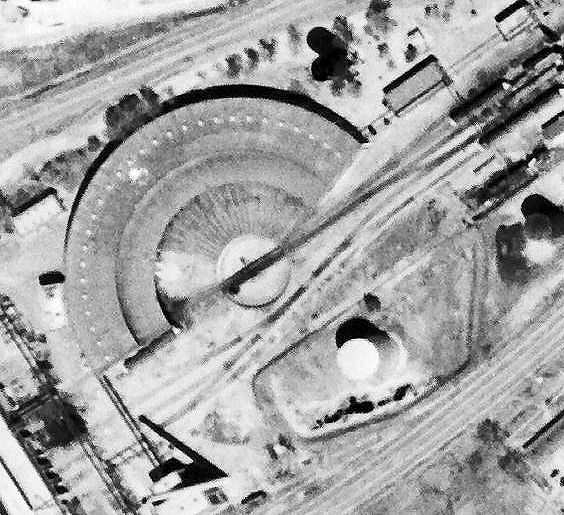 The huge Davidson yard of the Union Pacific railroad on West Vickery Boulevard also had a roundhouse and turntable. The yard was built by Texas & Pacific in 1928.
The huge Davidson yard of the Union Pacific railroad on West Vickery Boulevard also had a roundhouse and turntable. The yard was built by Texas & Pacific in 1928.
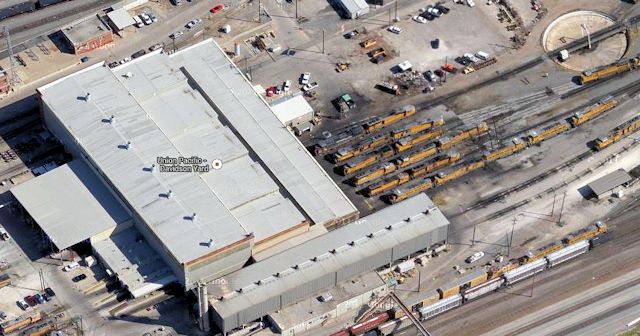
Fort Worth’s roundhouses are long gone now. The roundhouse at the Davidson yard was replaced by a squarehouse. But its turntable survives. There is also a turntable at the stockyards:
https://youtu.be/HMv70X7nE3E
(More on roundhouses and turntables.)
 Drive-in theaters, like amphitheaters and roundhouses, typically were fan-shaped, with a rounded back wall opposite the screen at the tapered end. The concentric curved ramps for parking paralleled the contour of the rounded back wall. For example, the contours of the Pike Drive-In Theater on East Lancaster Street can still be seen even though the drive-in closed in the 1960s.
Drive-in theaters, like amphitheaters and roundhouses, typically were fan-shaped, with a rounded back wall opposite the screen at the tapered end. The concentric curved ramps for parking paralleled the contour of the rounded back wall. For example, the contours of the Pike Drive-In Theater on East Lancaster Street can still be seen even though the drive-in closed in the 1960s.
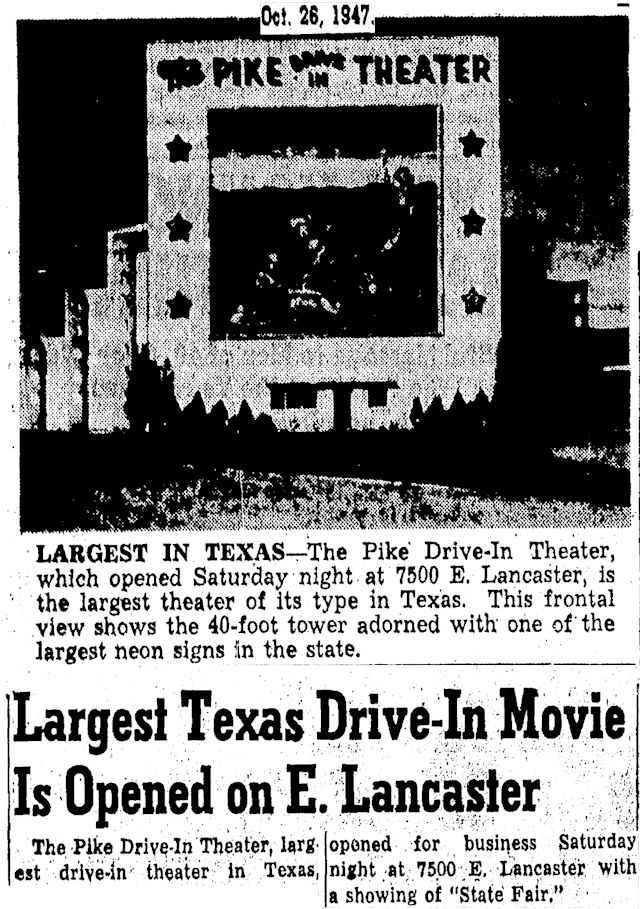 The Pike, so-named because East Lancaster Avenue was also known as the “Dallas Pike,” opened in 1947. The rear of the screen tower featured a cowboy mural accented in neon lighting.
The Pike, so-named because East Lancaster Avenue was also known as the “Dallas Pike,” opened in 1947. The rear of the screen tower featured a cowboy mural accented in neon lighting.
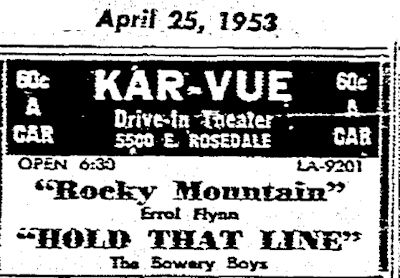 Back in the 1950s, if you blinked you missed the Kar-Vue drive-in theater, which apparently was in operation only from 1953 to 1956.
Back in the 1950s, if you blinked you missed the Kar-Vue drive-in theater, which apparently was in operation only from 1953 to 1956.
 The Kar-Vue was wedged between the Texas & Pacific railroad tracks and East Rosedale Street just east of Winnie Street. An industrial park now occupies that site.
The Kar-Vue was wedged between the Texas & Pacific railroad tracks and East Rosedale Street just east of Winnie Street. An industrial park now occupies that site.
 The Fort Worth Kar-Vue apparently was part of a chain based in Colorado.
The Fort Worth Kar-Vue apparently was part of a chain based in Colorado.

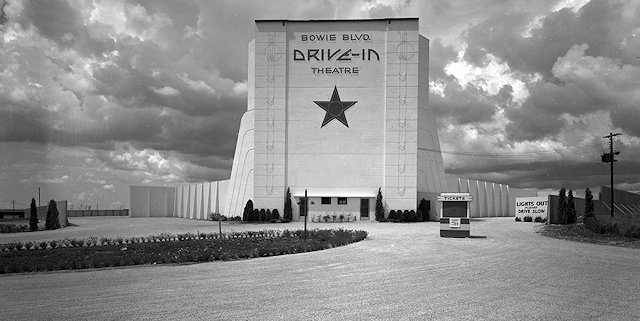 But Fort Worth’s first drive-in theater opened way back in 1941 in the 7100 block of Camp Bowie Boulevard (entrance on “Brownwood Highway”). The Bowie Boulevard drive-in theater opened the night that Blossoms in the Dust (about Edna Gladney) had its southwestern premiere at the Worth Theater. The Star-Telegram noted that the Bowie Boulevard was the fifty-third drive-in theater in the country and had a capacity of 406 cars. When the Bowie Boulevard theater presented movies featuring trains, movie-goers no doubt heard some great special effects at times because the Texas & Pacific bomber spur, which delivered parts to the bomber plant and fuel to the airfield, passed within forty feet of the drive-in. (Photo from University of Texas at Arlington Library Special Collections.)
But Fort Worth’s first drive-in theater opened way back in 1941 in the 7100 block of Camp Bowie Boulevard (entrance on “Brownwood Highway”). The Bowie Boulevard drive-in theater opened the night that Blossoms in the Dust (about Edna Gladney) had its southwestern premiere at the Worth Theater. The Star-Telegram noted that the Bowie Boulevard was the fifty-third drive-in theater in the country and had a capacity of 406 cars. When the Bowie Boulevard theater presented movies featuring trains, movie-goers no doubt heard some great special effects at times because the Texas & Pacific bomber spur, which delivered parts to the bomber plant and fuel to the airfield, passed within forty feet of the drive-in. (Photo from University of Texas at Arlington Library Special Collections.)
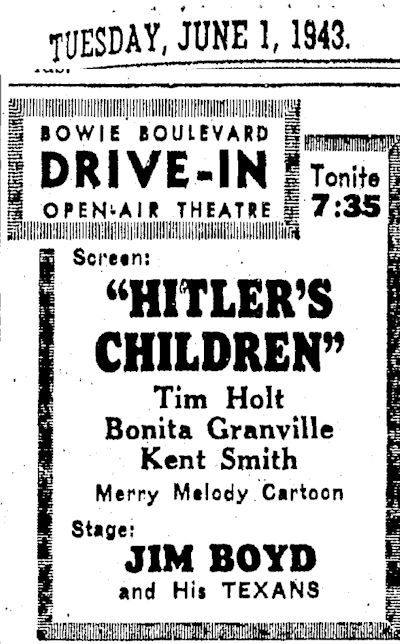 Note that the theater presented both film and live entertainment.
Note that the theater presented both film and live entertainment.
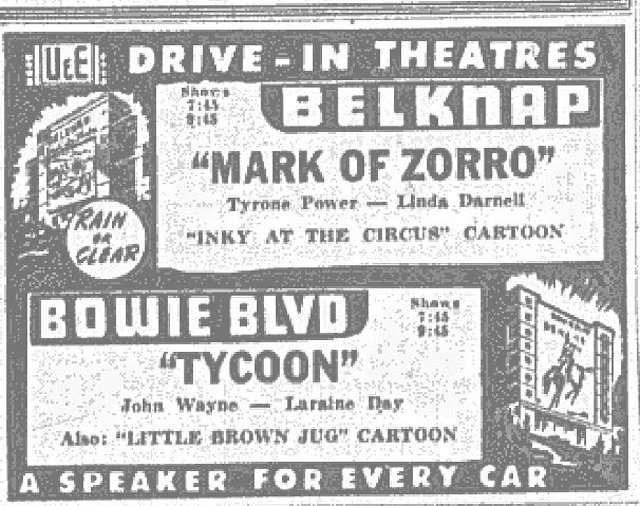 This ad is from a 1948 Fort Worth Press.
This ad is from a 1948 Fort Worth Press.
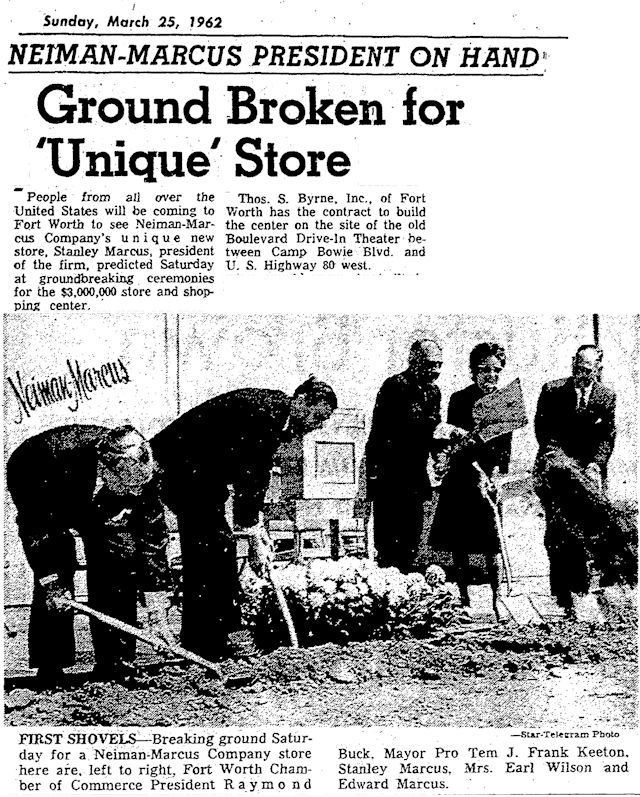
The Bowie Boulevard theater, later called the “Boulevard,” was located where Neiman Marcus would be built.
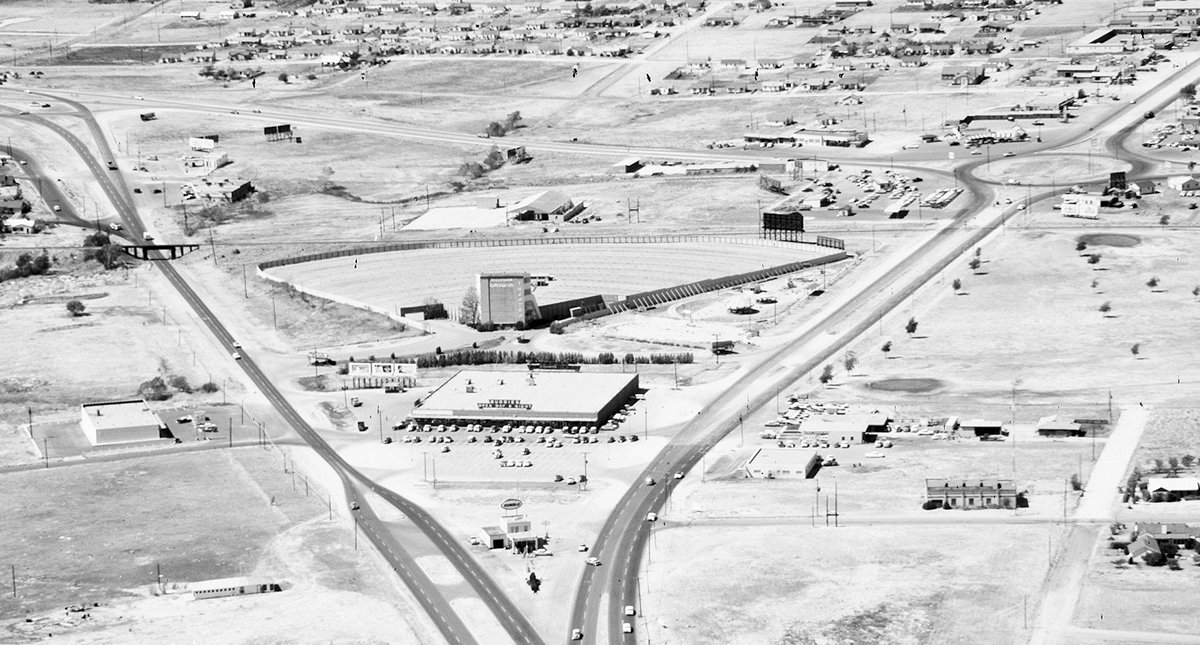 This aerial photo shows plenty of elbow room on the western edge of town in 1955. Looking west, it also shows the bomber spur trestle (left) over Camp Bowie Boulevard and, in the fork of U.S. 80 and Camp Bowie Boulevard, the Bowie Boulevard drive-in theater and a Buddie’s supermarket. To the right is another round shape—the Weatherford traffic circle. By 1963 that traffic circle would be gone, but to the south would be the Benbrook traffic circle. (Photo from University of Texas at Arlington Libraries Special Collections.)
This aerial photo shows plenty of elbow room on the western edge of town in 1955. Looking west, it also shows the bomber spur trestle (left) over Camp Bowie Boulevard and, in the fork of U.S. 80 and Camp Bowie Boulevard, the Bowie Boulevard drive-in theater and a Buddie’s supermarket. To the right is another round shape—the Weatherford traffic circle. By 1963 that traffic circle would be gone, but to the south would be the Benbrook traffic circle. (Photo from University of Texas at Arlington Libraries Special Collections.)
 By the time the Boulevard theater yielded to Neiman Marcus, the Boulevard had plenty of competition as drive-in theaters thrived on popcorn and passion. The 1960 city directory shows that 10 of 37 movie theaters were drive-ins. (More on bygone drive-ins.)
By the time the Boulevard theater yielded to Neiman Marcus, the Boulevard had plenty of competition as drive-in theaters thrived on popcorn and passion. The 1960 city directory shows that 10 of 37 movie theaters were drive-ins. (More on bygone drive-ins.)
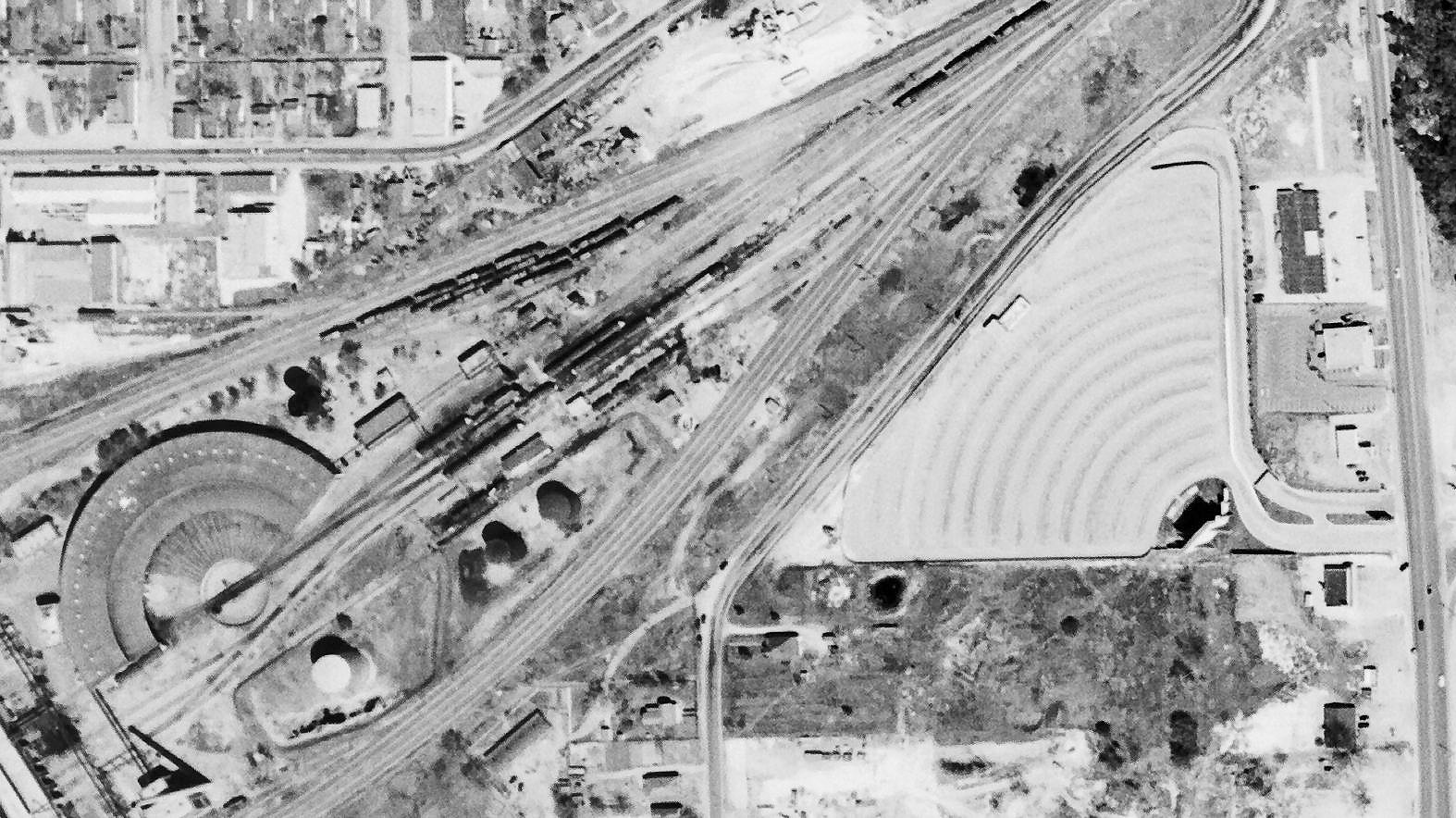 This 1952 aerial photo is a threefer: It shows the roundhouse and turntable of the Davidson railyard and, just to the east, the curved ramps of the parking area of the Parkaire drive-in theater on University Drive (where University Park Village is today).
This 1952 aerial photo is a threefer: It shows the roundhouse and turntable of the Davidson railyard and, just to the east, the curved ramps of the parking area of the Parkaire drive-in theater on University Drive (where University Park Village is today).
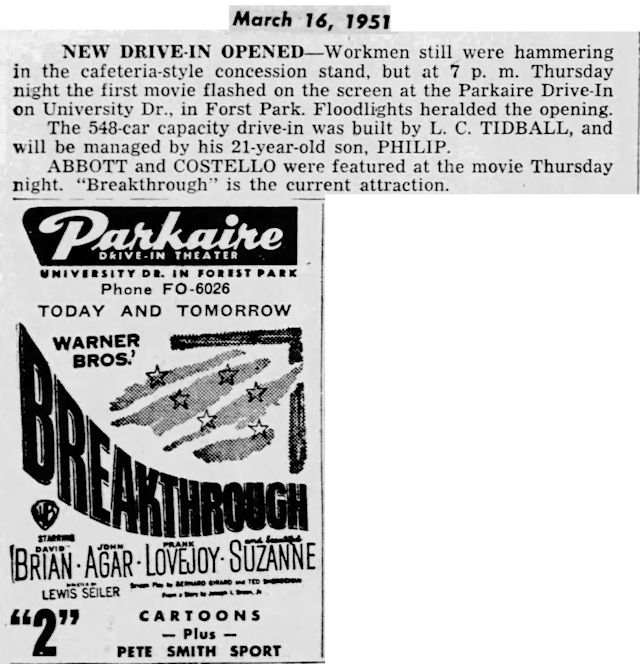 The Parkaire opened in March 1951, nine months before Carl Carlson opened his Carlson’s AAA Drive-In Restaurant one block south. (Twenty-one-year-old Parkaire manager Philip Tidball would manage the Village Opera House theater when it opened on that site in 1969.)
The Parkaire opened in March 1951, nine months before Carl Carlson opened his Carlson’s AAA Drive-In Restaurant one block south. (Twenty-one-year-old Parkaire manager Philip Tidball would manage the Village Opera House theater when it opened on that site in 1969.)
 Today roundhouses and school amphitheaters have gone the way of the passenger pigeon, the Studebaker, and the transistor radio; turntables and drive-in theaters also have mostly vanished. But just off North Main Street after the sun goes down each night, at the Coyote Drive-in Theater the round geometry of the 1950s lives on. Every night you can park your car on those concentric curved ramps and watch a double feature. Heck, you can even bring your necker knob.
Today roundhouses and school amphitheaters have gone the way of the passenger pigeon, the Studebaker, and the transistor radio; turntables and drive-in theaters also have mostly vanished. But just off North Main Street after the sun goes down each night, at the Coyote Drive-in Theater the round geometry of the 1950s lives on. Every night you can park your car on those concentric curved ramps and watch a double feature. Heck, you can even bring your necker knob.






Excellent, Mike. I never knew about the Poly amphitheater.
Thanks, Earl. Those amphitheaters were a complete surprise to me, too.